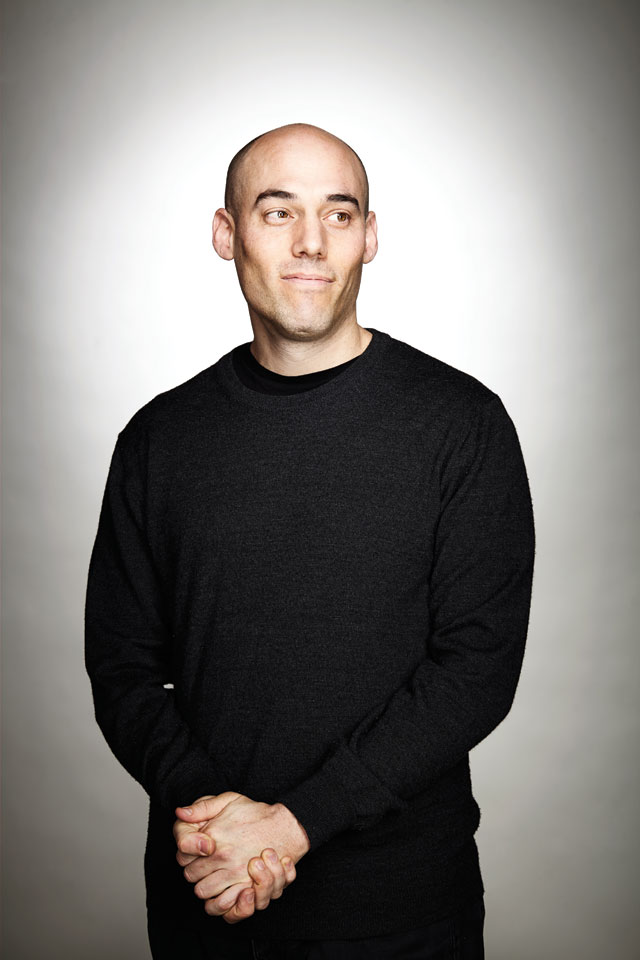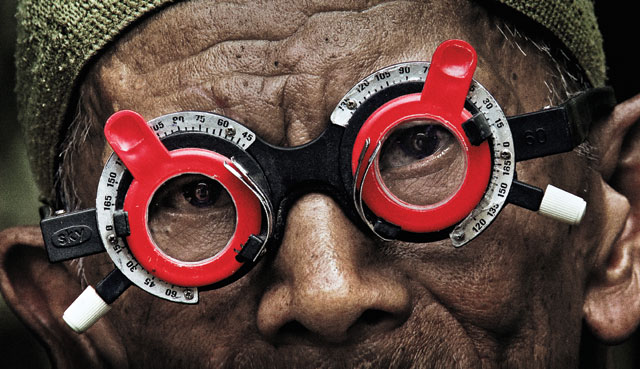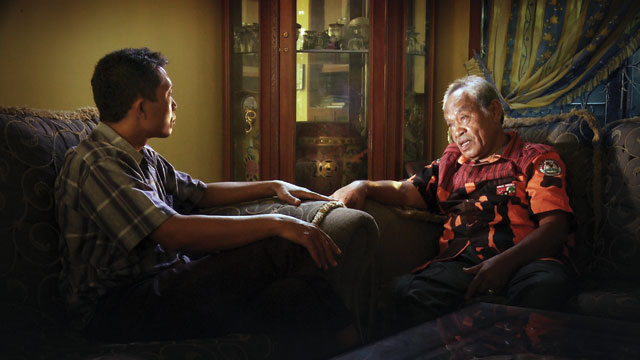The teacher is lying to his students. “Communists are cruel. Communists don’t believe in god. To change the political system the communists kidnapped six generals and sliced their faces with razor blades,” he says, wide-eyed. The group of Indonesian sixth-graders sit rapt in their stark, pastel green classroom, finishing their teacher’s spurious sentences when prompted. “The communists were cruel, so the government had to repress them. So let’s thank the heroes who struggled to make our country a…” he trails off. “Democracy!” the children answer in dutiful unison.
“I think that what the film shows is that so long as the past remains buried in silence there’s always the threat of recurrence because everyone knows the perpetrators can do terrible things and be untouchable,” says Joshua Oppenheimer. “They retain the power to continue brainwashing future generations. You see the seeds of future violence being sown in that school scene.”

More than a decade ago, Oppenheimer found himself in rural North Sumatra. While shooting a movie about plantation workers’ unions he discovered that his elderly Indonesian neighbour was a mass murderer. He had killed more than 250 people as part of an Indonesian death squad in the mid-1960s, and he made no attempt to conceal his acts. In fact, he boasted about them.
More smiling assassins began cropping up, all of them happy to recreate their crimes for Oppenheimer’s camera. The resulting Oscar-nominated, Bafta-winning documentary, The Act of Killing, was described by executive producer Werner Herzog as the most powerful, frightening and surreal film he had seen in more than a decade. In total, the film won more than 60 international awards.
This month sees the Indonesian release of The Look of Silence, Oppenheimer’s follow-up that also concerns itself with the informal death squads who wiped out at least 500,000 supposed communists – some describe it as a genocide – following former dictator Suharto’s 1965 coup. Once again, though, this is no historical documentary. It is a film about absence, about how the past haunts the present and the debilitating effects of suffering in silence on a society and one family in particular.
What was it that drew you to this family?
I noticed that for miles around there was one name, one victim, who was virtually synonymous with the whole genocide, and that was Ramli. That’s because his murder had witnesses and because it was so horrific. Everybody else was hauled off to rivers in secret in the dead of night and killed, never to be seen again.
So for the survivors, speaking about Ramli – as part of these events that the government had threatened everybody into pretending hadn’t occurred – was their way of insisting that these things had actually happened. It was a way to cling to one’s own sanity, as if to say: ‘Look, we’re traumatised for a reason.’ And very quickly it became inevitable that I would be introduced to Ramli’s family.
It is easy to fall in love with Ramli’s mother, but you decided that his younger brother, Adi, would be your protagonist.
Adi was born after the killings, and he was trying to understand why his family was so afraid and so traumatised. He was looking for answers in a family that was so broken by what had happened that they weren’t even able to talk about it. Adi latched onto my filmmaking process as a means to answer these big questions.
He was also the one who understood something about the core of both films, mainly that they’re about today and not about what happened in 1965. He said something that is very insightful and is really the core of both films. He said: “Keep filming the perpetrators, and anyone who hears the way they’re speaking will recognise that there’s something terribly wrong in Indonesia today, because this is not how human beings should talk about these kinds of actions.”
You spent a great deal of time with these murderers while making the films. Is that partly why you’re always very careful not to refer to them as ‘the bad guys’? Did you see their humanity?
I just think that when you divide the world into good guys and bad guys it’s the first step towards normalising atrocity. I think both films are made from the principle that every act of evil in our history has been committed by human beings like us, and I think that looking at the humanity of the perpetrator – the horror and the challenge of doing that – is also the precondition for forgiveness.
Adi had spent eight years watching the footage of the perpetrators and he was transformed by that. He told me he wanted to meet them and confront them, and my first response was absolutely not, because I couldn’t imagine it being done safely. But then Adi explained why he wanted to do it: He hoped he would be able to forgive them if they acknowledged what they did was wrong, and that would mean his family no longer lived alongside them in the roles of victims and perpetrators, but as human beings. And that was so profound and so dignified that I knew we should try it.
I know you’re of the opinion that there is one scene in particular in The Look of Silence that is the genesis of both films – where the two men take you down to the river and take turns playing perpetrator and victim, showing you how they killed people.
I tried something when shooting it that I hadn’t tried before, which was to bring two death squad leaders from neighbouring villages together – people who didn’t really know each other – to see how they would talk, how they would negotiate the task of creating this abhorrent story. To my horror, it was as though they were reading from a shared script, and that chilled me to my core because I could no longer cling to the hope that the boasting was a sign of personal insanity. It was actually a collective insanity; a political insanity. In that moment, that horrible afternoon, I had this awful feeling that I’d wandered into Germany 40 years after the Holocaust, only to find the Nazis still in power.
Are you interested in that science fiction scenario that looks at ‘what happens if the Nazis win’?
Well I had the feeling that that scenario was not the exception to the rule but the rule itself across so much of the world. We would just rather not look at it. I also knew there would be two films: One about what happens when killers win and build a whole political system on the basis of terror and lies – that became The Act of Killing. The other would be about what it does to human beings to have to live for 50 years in fear and silence. What does it do to the human body? What does it do to a mother’s relationship with her son? To a wife’s relationship with her husband? Of course, that became The Look of Silence.
Throughout the film, Adi’s mother says a number of things – “There’s no use raising it now,” for example – that suggest she just wants to forget about what happened before.
Adi’s mother has never been able to forget that awful night when she was forced to hand her son over to the men who killed him. It has been echoing continually through her head and she hasn’t been able to let him go and heal herself. The final image shows her talking to some jumping beans in her hand. She’s saying: “Are you there? Are you really there? Come out if you’re there.” I think that this is some kind of mourning, and she cries for the first time in the film. She told us later that it was also the first time she had cried openly since the night Ramli was taken away and killed – 47 years later she cried.
Things take a rather sinister turn when some of the perpetrators reveal that they used to drink their victims’ blood. That must have been quite a shock.
For me, it’s a clear sign of their trauma. The fact they say they have to drink blood so they don’t go crazy – this way of coping with trauma is so extreme and so frightening it is a sign of just how far beyond the realm of humane behaviour the act of killing is. The fact they’ve gone so far that cannibalism could become self-protective is a sign of this nightmarish world they’ve entered and dragged their whole society into.
At one point, the son of a death squad leader says: “The wound is open.” Is that an apt metaphor for the film?
I want there to be healing, and I want there to be truth and reconciliation. But of course it’s not about what I want. The survivors who have been working with me to create these films are encouraging this. I’m not sure if the wound is open or not, but it needs to be cleaned and it needs to be dressed and healed. At the moment the wound is festering.



